Fundamentals of Data & AI
Power BI for Data Analysis
Python for Data Analysis
SQL for Data Analysis
Statistics for Data Analysis
Machine Learning for Data Analysis
Transformers & Gen AI
Ai Agents
Realtime ClassRoom Training
Project and Task Based
6 to 8 Hrs Every Day
Interviews, Jobs and Placement Support
Communication Skills & Personality Development
Interview Preparations
50000 +
Students Enrolled
4.7 ![]()
(500)
Ratings
6 months
Duration
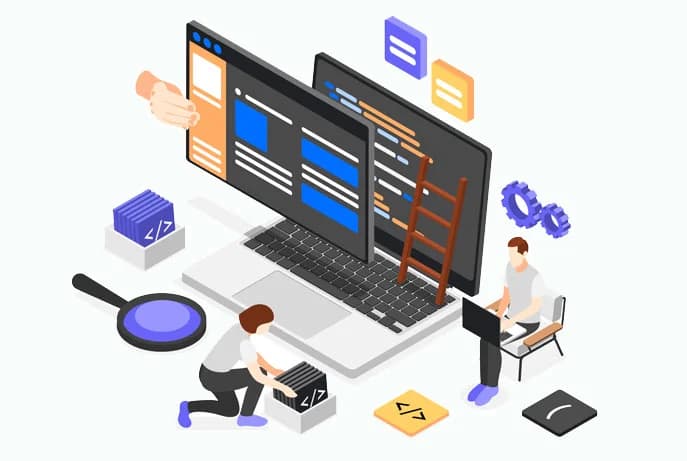
Why Data Analyst with AI Training With Digital Edify?
Data Analyst Engineer
Data Analyst Architect
Technology Consultant ReactJs
Systems Engineer
System Administrator
₹ 8 LPA
Avg package
44 %
Avg hike
3000 +
Tech transitions
Annual Average Salaries
Demand

87%
Managers said hiring Java Training was top priority
Our Alumni Work at Top Companies





1
Learn
Learn from Curated Curriculums developed by Industry Experts
Data Analyst with AI Course Curriculum
It stretches your mind, think better and create even better.
Topics:
What is AI?
AI is the ability of machines to perform tasks that require human intelligence, like learning, reasoning, and problem-solving.
How AI works
AI uses data, algorithms, and computing power to make predictions and automate tasks.
AI in everyday life
Virtual assistants (Open AI, Deepseek), recommendation systems (Netflix, YouTube), and chatbots.
Topics:
Application Overview
Understanding the significance and types of applications.
Web Application Fundamentals
Key components and basic concepts of web applications.
Web Technologies
Essential technologies and frameworks used in web application development.
Software Development Life Cycle (SDLC)
Phases and methodologies for effective software development.
Agile & Scrum
Principles, frameworks, and best practices for managing projects iteratively.
Topics:
What is data?
Information collected from different sources (text, images, videos, numbers).
Types of Data
Structured Data: Organized in tables (databases, spreadsheets).
Unstructured Data: Freeform content (videos, images, text, emails).
Semi-structured Data: A mix of both (JSON, XML).
Data Storage
Databases (SQL, NoSQL), cloud storage (AWS, Google Drive).
Data Analysis
Finding useful information in data to help make better decisions.
Data Engineering
Building systems and processes to collect, store, and process large datasets using tools like Hadoop and Spark.
Topics:
Processing Power for AI
AI needs strong computing resources to process large amounts of data.
Key Technologies
CPU (Central Processing Unit): General-purpose processor, used for basic AI tasks.
GPU (Graphics Processing Unit): Specialized for AI training and deep learning.
TPU (Tensor Processing Unit): Optimized for AI workloads (used by Google).
Edge Computing
Running AI on devices instead of the cloud (e.g., AI in mobile phones).
Cloud AI Platforms
Google Cloud AI, AWS AI, Microsoft Azure AI.
Topics:
Business Intelligence & Analytics
AI automates data visualization, trend detection, and predictive analytics.
Example: Power BI and Tableau use AI-driven insights for forecasting and decision-making.
Financial Data Analysis
AI detects fraud, assesses risks, and predicts market trends.
Example: AI-powered credit scoring and fraud detection in banking.
Healthcare Analytics
AI analyzes medical data, predicts disease outbreaks, and aids diagnostics.
Example: AI in medical imaging (MRI/CT scan analysis).
Marketing & Customer Insights
AI segments customers, analyzes sentiment, and optimizes marketing campaigns.
Example: AI-driven customer behavior analysis for personalized recommendations.
Retail & E-Commerce Analytics
AI optimizes pricing, inventory management, and product recommendations.
Example: Amazon’s AI-powered recommendation system.
Topics:
Overview of Analytics and Power BI Tool Suite
Overview of Analytics and Power BI Tool Suite
Career Opportunities and Job Roles in Power BI
Career Opportunities and Job Roles in Power BI
Power BI Data Analyst (PL 300) Certification Overview
Power BI Data Analyst (PL 300) Certification Overview
Introduction to AI Visuals and Features in Power BI
Introduction to AI Visuals and Features in Power BI
Topics:
Understanding the Power BI Ecosystem and Architecture
Understanding the Power BI Ecosystem and Architecture
Data Sources and Types for Power BI Reporting
Data Sources and Types for Power BI Reporting
Power BI Design Tools and Installation
Power BI Design Tools and Installation
Exploring Power BI Desktop Interface
Exploring Power BI Desktop Interface: Data View, Report View, and Canvas
Implementing Various Chart Types and Map Visuals
Implementing Various Chart Types and Map Visuals
Advanced Filtering Techniques and Utilizing Bookmarks
Advanced Filtering Techniques and Utilizing Bookmarks
Topics:
Visual Interaction Techniques in Reports
Visual Interaction Techniques in Reports
Using Slicers for Dynamic Report Filtering
Using Slicers for Dynamic Report Filtering
Managing Report Pages and Visual Sync Limitations
Managing Report Pages and Visual Sync Limitations
Implementing Grouping and Binning in Reports
Implementing Grouping and Binning in Reports
Creating and Utilizing Hierarchies for Drill-Down Reports
Creating and Utilizing Hierarchies for Drill-Down Reports
Topics:
Introduction to Power Query M Language
Introduction to Power Query M Language
Basic and Advanced Data Transformations
Basic and Advanced Data Transformations
Query Duplication, Grouping, and Data Cleaning Techniques
Query Duplication, Grouping, and Data Cleaning Techniques
Implementing Parameter Queries for Dynamic Data Loads
Implementing Parameter Queries for Dynamic Data Loads
Creating and Managing Parameters in Power Query
Creating and Managing Parameters in Power Query
Topics:
Overview of Power BI Cloud Components and App Workspaces
Overview of Power BI Cloud Components and App Workspaces
Creating, Managing, and Sharing Reports & Dashboards
Creating, Managing, and Sharing Reports & Dashboards
Configuring and Managing Gateways for Data Refresh
Configuring and Managing Gateways for Data Refresh
Utilizing Workbooks and Excel Online with Power BI Cloud
Utilizing Workbooks and Excel Online with Power BI Cloud
Creating and Managing Power BI Apps
Creating and Managing Power BI Apps
Topics:
Importance of DAX in Power BI
Importance of DAX in Power BI
Learning Basic DAX Syntax, Data Types, and Contexts
Learning Basic DAX Syntax, Data Types, and Contexts
Implementing Quick Measures and Advanced Calculations
Implementing Quick Measures and Advanced Calculations
Mastering Variables and Dynamic Expressions in DAX
Mastering Variables and Dynamic Expressions in DAX
Advanced DAX Functions for Time Intelligence
Advanced DAX Functions for Time Intelligence
Implementing Row-Level Security (RLS) with DAX
Implementing Row-Level Security (RLS) with DAX
Topics:
Configuring Power BI Report Server
Configuring Power BI Report Server
Understanding Power BI Administration and AI Features
Understanding Power BI Administration and AI Features
Managing Security and Report Server Administration in Power BI
Managing Security and Report Server Administration in Power BI
Utilizing DAX for Custom Analytics and Reporting
Utilizing DAX for Custom Analytics and Reporting
Topics:
Why Python?
Simplicity, Libraries, Community Support.
Setting up Python
Anaconda, Jupyter Notebook, VS Code.
Topics:
Data Types
int, float, string, list, tuple, dict.
Control Structures
if-else, loops.
Functions & Modules
Functions & Modules.
File Handling
File Handling.
Topics:
Classes & Objects
Classes & Objects.
Inheritance & Polymorphism
Inheritance & Polymorphism.
Encapsulation & Abstraction
Encapsulation & Abstraction.
How OOP is used in AI
e.g., Model Classes in TensorFlow/PyTorch.
Topics:
NumPy
Arrays & Numerical Computation.
Pandas
Data Manipulation & Analysis.
Matplotlib & Seaborn
Data Visualization.
Topics:
Reading/Writing Data
CSV, Excel, JSON.
Handling Missing Data
Handling Missing Data.
Data Cleaning & Transformation
Data Cleaning & Transformation.
Topics:
Introduction to Databases and SQL
Understanding relational databases and the role of SQL.
SQL Syntax Overview
Keywords, statements, and clauses.
Basic SQL Commands
`SELECT`, `FROM`, `WHERE`, and `ORDER BY`.
Filtering Data
Using conditions to retrieve specific data (`AND`, `OR`, `NOT`).
Topics:
Understanding Table Relationships
Primary keys, foreign keys, and the importance of relationships in databases.
Join Operations
`INNER JOIN`, `LEFT JOIN`, `RIGHT JOIN`, and `FULL JOIN`.
Subqueries and Nested Queries
Using subqueries in the `SELECT`, `FROM`, and `WHERE` clauses.
Aggregating Data
Using `GROUP BY` and aggregate functions (`COUNT`, `SUM`, `AVG`, `MIN`, `MAX`).
Topics:
Data Manipulation Commands
`INSERT`, `UPDATE`, `DELETE`.
Managing Tables
Creating and altering tables (`CREATE TABLE`, `ALTER TABLE`, `DROP TABLE`).
Advanced Filtering Techniques
Using `LIKE`, `IN`, `BETWEEN`, and wildcard characters.
Working with Dates and Times
Understanding and manipulating date and time data.
Topics:
Advanced SQL Functions
String functions, mathematical functions, and date functions.
Window Functions
Overviews of `ROW_NUMBER`, `RANK`, `DENSE_RANK`, `LEAD`, `LAG`, and their applications.
Query Performance Optimization
Indexes, query planning, and execution paths.
Common Table Expressions (CTEs)
Writing cleaner and more readable queries with `WITH` clause.
Topics:
Analytical SQL for Reporting
Building complex queries to answer analytical questions.
Pivoting Data
Transforming rows to columns (`PIVOT`) and columns to rows (`UNPIVOT`).
Data Warehousing Concepts
Introduction to data warehousing practices and how they apply to SQL querying.
Integrating SQL with Data Analysis Tools
Connecting SQL databases with tools like Excel, Power BI, and Python for deeper data analysis.
Topics:
Why Statistics?
Understanding Data, Making Data-Driven Decisions, Business Insights.
Types of Statistics
Descriptive: Summarizing Data.
Inferential: Making Predictions from Data.
Topics:
Measures of Central Tendency
Mean, Median, Mode (Interpreting Averages in Datasets).
Measures of Dispersion
Variance, Standard Deviation, Range, IQR (Understanding Data Spread).
Skewness & Kurtosis
Identifying Distribution Shapes and Outliers in Data.
Topics:
Basic Probability Concepts
Probability Rules, Conditional Probability (Likelihood of Events in Data).
Probability Distributions & Their Applications
Discrete: Binomial (Customer Conversions), Poisson (Website Traffic Predictions).
Continuous: Normal (Stock Price Trends), Exponential (Service Wait Times).
Topics:
Hypothesis Testing
Confidence Intervals, p-value Interpretation (Validating Business Hypotheses).
Common Tests & Use Cases
t-test: Comparing Two Groups (A/B Testing in Marketing).
Chi-square test: Analyzing Categorical Data (Customer Preferences).
ANOVA: Comparing Multiple Groups (Sales Performance Across Regions).
Topics:
Data Visualization Techniques
Histograms, Box Plots, Scatterplots (Understanding Trends & Patterns).
Correlation & Covariance
Identifying Relationships Between Variables (Customer Behavior Analysis).
Outlier Detection
Impact of Outliers on Business Data (Fraud Detection).
Topics:
Regression Analysis
Linear Regression: Predicting Sales, Revenue, Demand Trends.
Logistic Regression: Customer Churn, Lead Conversion Predictions.
Bias-Variance Tradeoff & Model Evaluation
Ensuring Reliable Predictive Models.
Overfitting vs. Underfitting
Overfitting vs. Underfitting in Data Analytics Models.
Topics:
What is ML in Data Analytics?
Definition, Importance, Use Cases.
Types of ML & Their Role in Analytics
Supervised Learning: Predictive analytics for business insights (Regression, Classification).
Unsupervised Learning: Discovering patterns in data (Clustering, Anomaly Detection).
Reinforcement Learning: Optimizing decision-making processes.
Topics:
Regression for Forecasting & Trend Analysis
Linear Regression (Predicting Sales, Revenue Forecasting).
Multiple Regression (Impact of Multiple Factors on Outcomes).
Regularization Techniques (L1 Lasso, L2 Ridge) for Avoiding Overfitting.
Classification for Business Intelligence
Logistic Regression (Customer Churn Prediction).
Decision Trees (Risk Assessment in Finance).
Random Forest (Fraud Detection in Transactions).
K-Nearest Neighbors (Customer Segmentation).
Naïve Bayes (Spam Detection in Emails).
Performance Metrics for Data Analytics Models
Accuracy, Precision, Recall, Confusion Matrix.
Business Impact of ML Model Performance.
Topics:
Clustering for Market Segmentation & Pattern Recognition
K-Means (Customer Segmentation, Product Categorization).
Hierarchical Clustering (Grouping Users Based on Behavior).
DBSCAN (Anomaly Detection in Transaction Data).
Topics:
Ensuring Reliable Predictions
Train-Test Split & Cross-Validation.
Overfitting vs. Underfitting in Business Applications.
Hyperparameter Tuning (Grid Search, Random Search) for Model Optimization.
Topics:
Preparing Data for Machine Learning Models
Handling Missing Data in Business Analytics.
Feature Scaling (Normalization, Standardization) for Consistent Insights.
Feature Selection & Extraction to Improve Model Performance.
Topics:
What is Generative AI?
Overview of generative AI concepts.
Key Applications
Text (Chatbots, Content Generation).
Image (DALL·E, MidJourney).
Audio (Music Generation, Voice Synthesis).
Code (Cursor, Copilot).
Evolution of GenAI
From Rule-Based Systems to Deep Learning.
Comparison of Generative Models (GANs, VAEs, LLMs).
Challenges in GenAI
Bias, Hallucinations, Ethical Considerations.
Topics:
What is Prompt Engineering?
Crafting inputs for AI models.
Importance of Effective Prompt Design
Improving model outputs.
Basic Prompting Techniques
Instruction-Based Prompts.
Few-Shot & Zero-Shot Learning.
Advanced Prompt Engineering
Chain-of-Thought (CoT) Prompting.
Self-Consistency & Iterative Refinement.
Structured vs. Unstructured Prompts.
Experimenting with LLMs
Using GPT-4, Claude, or LLaMA.
Topics:
Transformers & LLMs
Why Transformers? (Limitations of RNNs & LSTMs).
Key Components: Self-Attention Mechanism, Multi-Head Attention, Encoder-Decoder Architecture.
Evolution of Transformers
From BERT to GPT, T5, and Beyond.
Large Language Models (LLMs)
What are LLMs?
Pre Training vs. Fine-Tuning.
Popular LLM Architectures: GPT (OpenAI GPT-4, O3), DeepSeek, BERT (Contextual Embeddings), T5 (Text-to-Text Models).
Challenges in LLMs
Bias & Ethical Issues.
Scalability & Cost.
Model Hallucinations.
Generative Adversarial Networks (GANs)
What are GANs?
How GANs Work: Generator & Discriminator.
Applications of GANs (DeepFake, Image Generation, Super-Resolution).
Autoencoders & Variational Autoencoders (VAEs)
What are Autoencoders?
Difference Between Autoencoders & VAEs.
Applications (Data Denoising, Anomaly Detection).
Lightweight Models (LIMs)
What are Lightweight AI Models?
Difference Between LIMs & LLMs.
Use Cases of LIMs in Edge AI.
Topics:
LangChain
What is LangChain.
Building Modular LLM Workflows.
Practical Applications.
Hugging Face
Overview of Hugging Face Transformers & Datasets.
How to Fine-Tune & Deploy Models.
Vector Databases & Retrieval-Augmented Generation (RAG)
Introduction to Vector Databases (Pinecone, Weaviate, FAISS).
Understanding RAG and Its Role in GenAI.
Topics:
What are AI Agents?
Overview of AI agents.
Difference Between AI Agents and Traditional AI Systems
Comparing agent-based and traditional AI.
Key Characteristics
Autonomy.
Goal-Oriented Behavior.
Tool Usage & Execution.
Real-World Applications of AI Agents
Examples of AI agent use cases.
Topics:
CrewAI
Overview: How CrewAI enables multi-agent workflows.
Components: Roles, Tasks, Tools, Memory.
Use Case: Automating research and content generation.
N8N
What is N8N?
Connecting AI Agents with APIs and automation.
Use Case: AI-driven task execution with n8n.
Langflow
Introduction to Langflow.
Building AI Agent workflows with a drag-and-drop interface.
Use Case: Rapid prototyping and deployment of AI Agents.
Topics:
Creating AI Agents
Using CrewAI + Lang Flow.
Automating tasks
With CrewAI + N8N.
Multi-agent collaboration
For business workflows.
Topics:
Challenges
Hallucinations, Reliability, Ethical Issues.
Future Trends
AI Agents in Business, Research, and Automation.
Topics:
APIs
FastAPI.
CI/CD Containerization
Docker.
Cloud Platforms
AWS, Google Cloud, Azure.
Project
Deploy a sentiment analysis model as a web app.
TOOlS & PLATFORMS


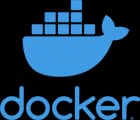


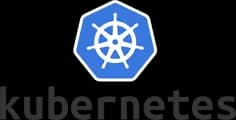









Our Trending Courses
Our Trending Programs
2
Build
Work on our Real-time Projects , Task Based
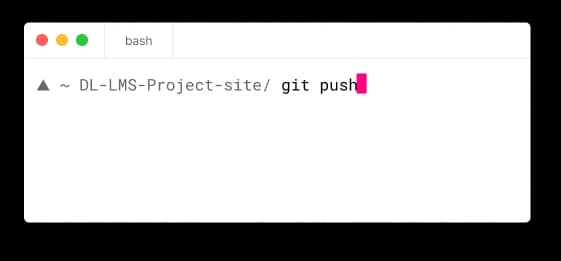
An LMS project develops a digital platform for online learning,featuring course creation, content management, user tracking,assessments, and reporting, aimed at enhancing educational interaction.
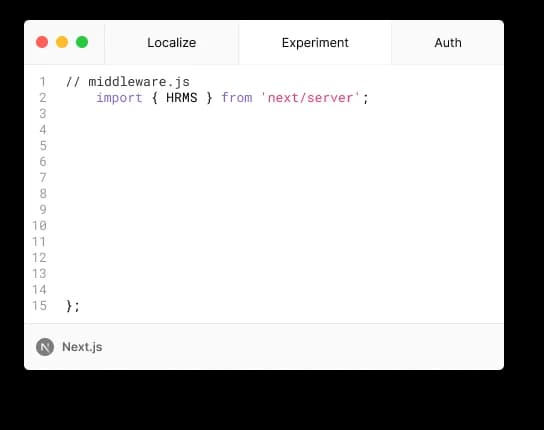
The HRMS project develops a digital system for managing HR functions like employee data, payroll, recruitment, and performance, aiming to streamline processes and enhance organizational efficiency.
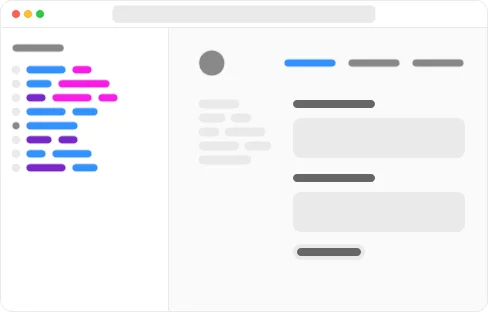
A CRM project develops a system to manage company interactions with customers, incorporating tools for contact, sales, productivity, and support to enhance service, drive sales, and boost retention.
3
Get Certification
Internships and Course certifications for Enhanced Skill Validation.
Internship Certificate
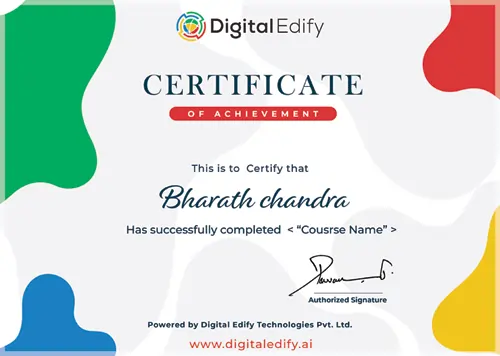
Course Completion Certificate

4
Get Job
Our focus on job-readiness Github Profile, Linkedin Profile, Resume Prep and Help Apply
GitHub Profile
Guidance on creating and maintaining a professional GitHub profile to showcase technical projects and coding prowess.
LinkedIn Profile
Assistance in crafting a compelling LinkedIn profile for networking and visibility among recruiters.
Resume Preparation
Expert advice on resume writing to effectively highlight skills, experience, and achievements.
Help in Applying
Support in identifying suitable job opportunities and navigating the application process.
IT Engineers who got Trained from Digital Edify




Upcoming Batch Schedule
3rd Nov 2025
Monday
8 AM (IST)
1hr-1:30hr / Per Session
29th Oct 2025
Wednesday
10 AM (IST)
1hr-1:30hr / Per Session
31st Oct 2025
Friday
12 PM (IST)
1hr-1:30hr / Per Session
Can’t find a batch you were looking for?
LEARNERS
BATCHES
YEARS
SUPPORT
100000+ uplifted through our hybrid classroom & online training, enriched by real-time projects and job support.
Come and chat with us about your goals over a cup of coffee.
2nd Floor, Hitech City Rd, Above Domino's, opp. Cyber Towers, Jai Hind Enclave, Hyderabad, Telangana.
3rd Floor, Site No 1&2 Saroj Square, Whitefield Main Road, Munnekollal Village Post, Marathahalli, Bengaluru, Karnataka.